There are many things to do in Nanjing that make for an excellent stop on any China itinerary. What, you haven’t heard of it? Well, you will soon!
Most tourists pass right through Nanjing when traveling from Shanghai to Beijing (or visa versa) But after spending a few days discovering Nanjing, we feel it is a destination in its own right and should be more than a blip on people’s China travel Radar.
Why Visit Nanjing China
Nanjing is a fascinating city that has played an important roll in Chinese history for thousands of years. With a population of 6 million, it was the former capital of China.
Today it is the capital of the Jiangsu Province and is a thriving metropolis of 8.3 million people.
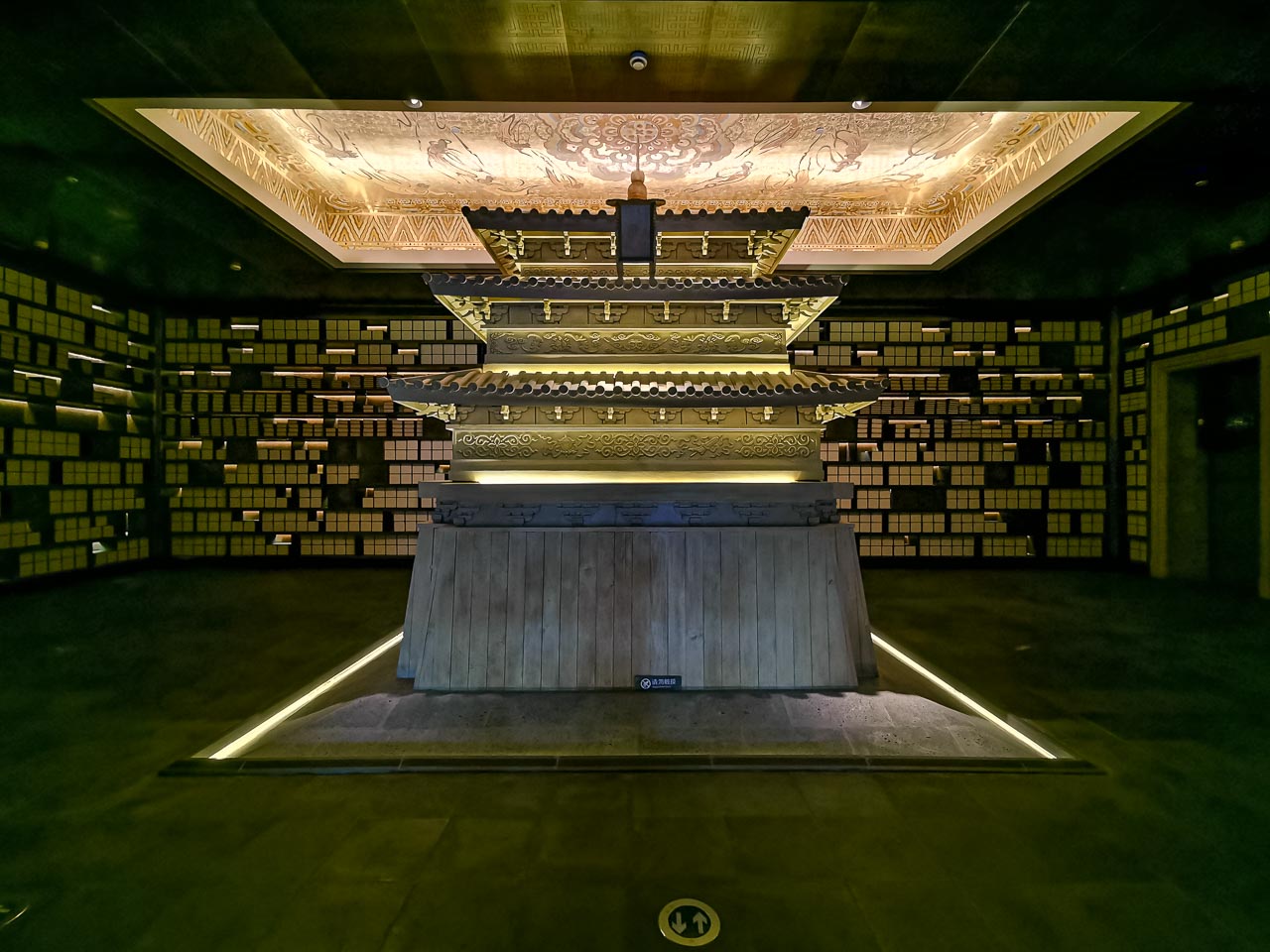
Nanjing was first named the capital city in 229 AD during the three kingdoms period. It has been a capital city many times over with its reign finally coming to an end in 1949 when the capital was changed to Beijing.
Being the capital city during a tumultuous period made Nanjing a target and in 1937 it was targetted by Japan.
Interesting fact: Many people from China, relocated to Taiwan in the 1940s, after japan’s surrender of control.
300,000 people were slaughtered in the Nanjing Massacre and the city was nearly destroyed over a period of six weeks.
This incident is contested by the Japanese stating that the numbers have been exaggerated, but there is a museum in Nanjing that is worth a visit to read about first-hand accounts.
Regardless of the final death toll, a great tragedy took place here.
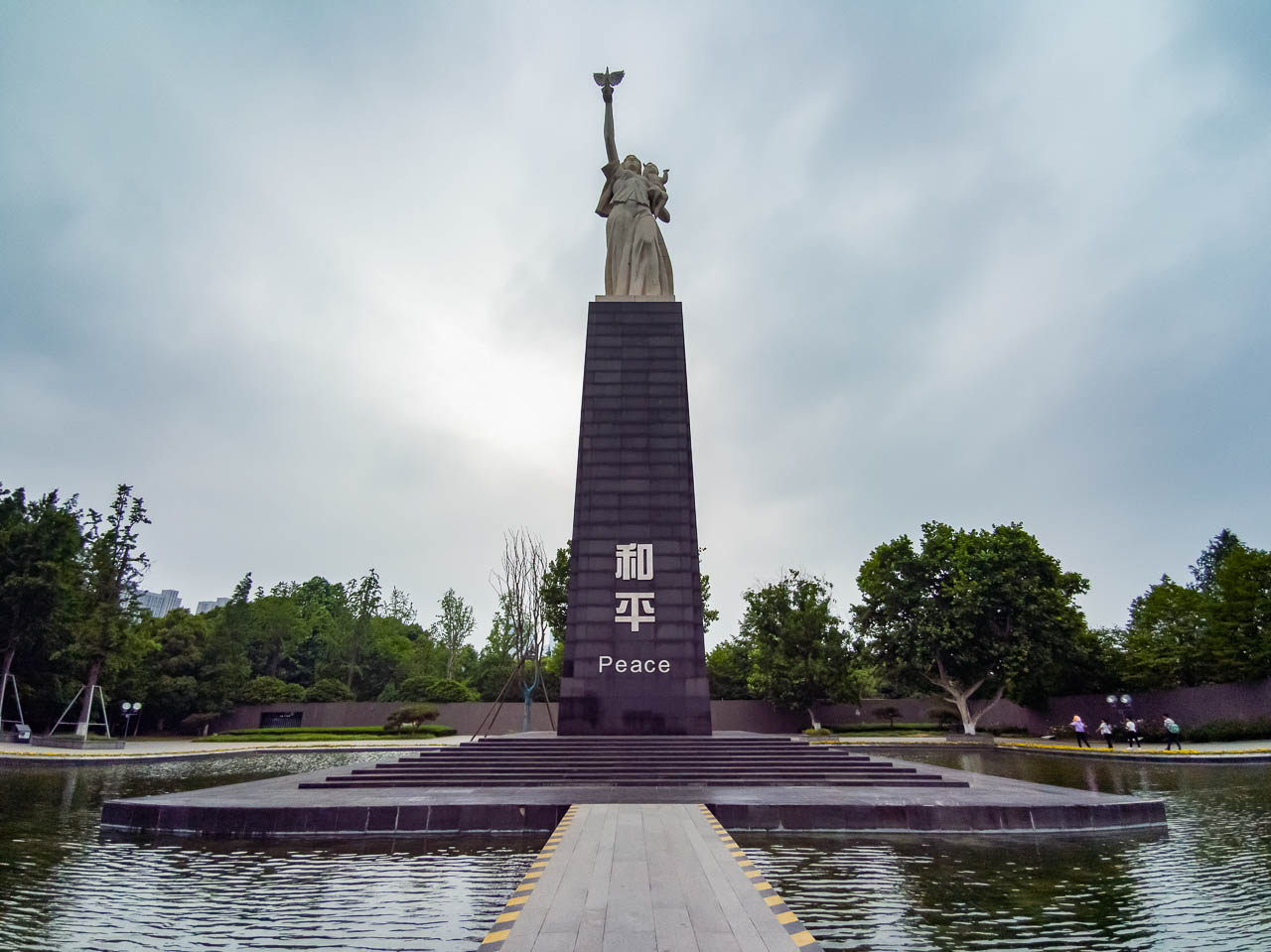
Nanjing is a short 1-hour train ride from Shanghai. And because it is not on the well-trodden tourist path, there are plenty of things to see and do that have yet to be overrun with Instagram stars taking selfies in the streets.
It’s a place that is relatively unknown to foreigners yet very popular with local tourists. I have a feeling Nanjing won’t remain a secret for long.
There are many reasons to visit Nanjing and here they are!
Table of Contents
Things to do in Nanjing
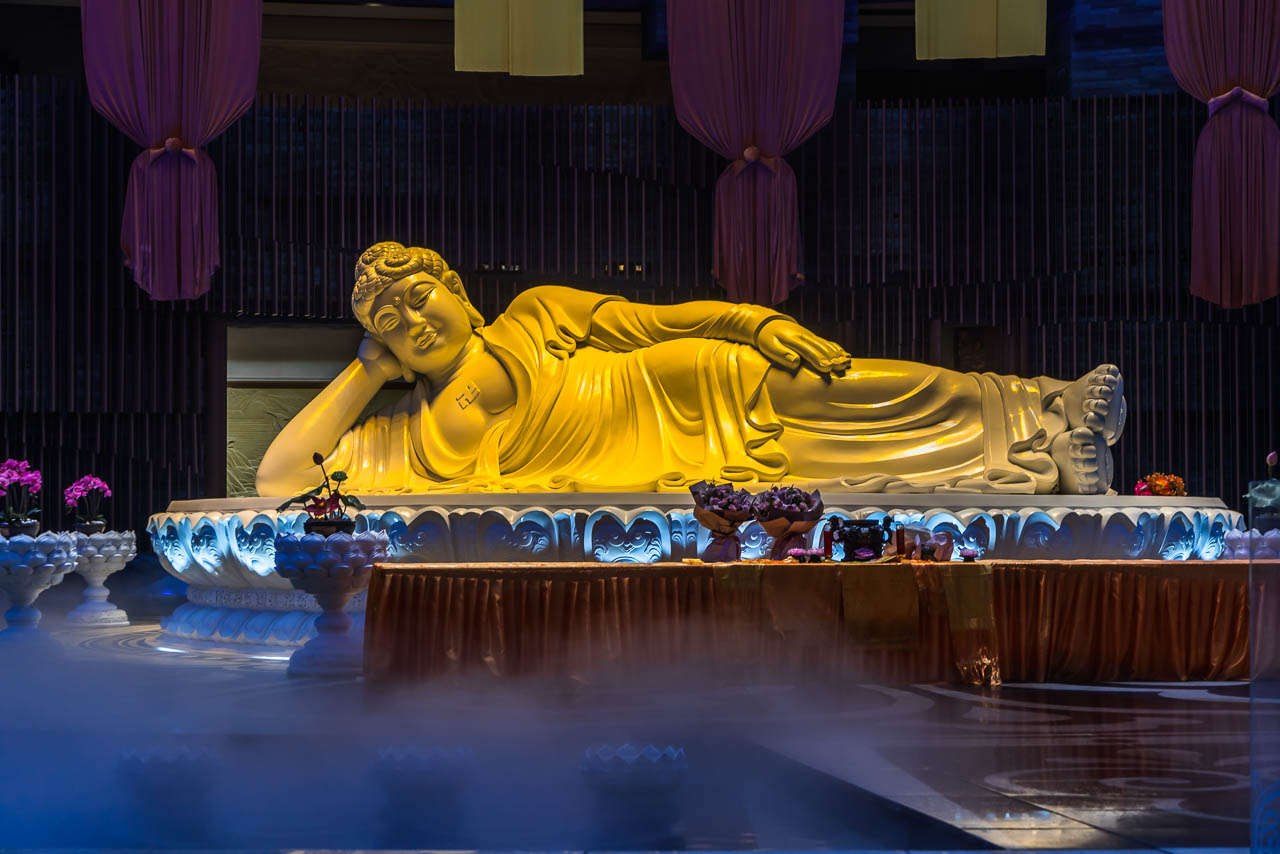
Whenever Dave I get the opportunity to travel to China, we jump at it. China still has that allure of being exotic and foreign.
We just love stepping off the plane into its intoxicating mix of a culture hanging on to ancient traditions while their futuristic cities lead the world in technology.
We hadn’t known anything about Nanjing before going, but hearing that it was a popular destination from Shanghai, we were excited to explore it.
It turns out, Nanjing is a great choice traveler’s to China.
1. Nanjing Niushoushan Cultural Park
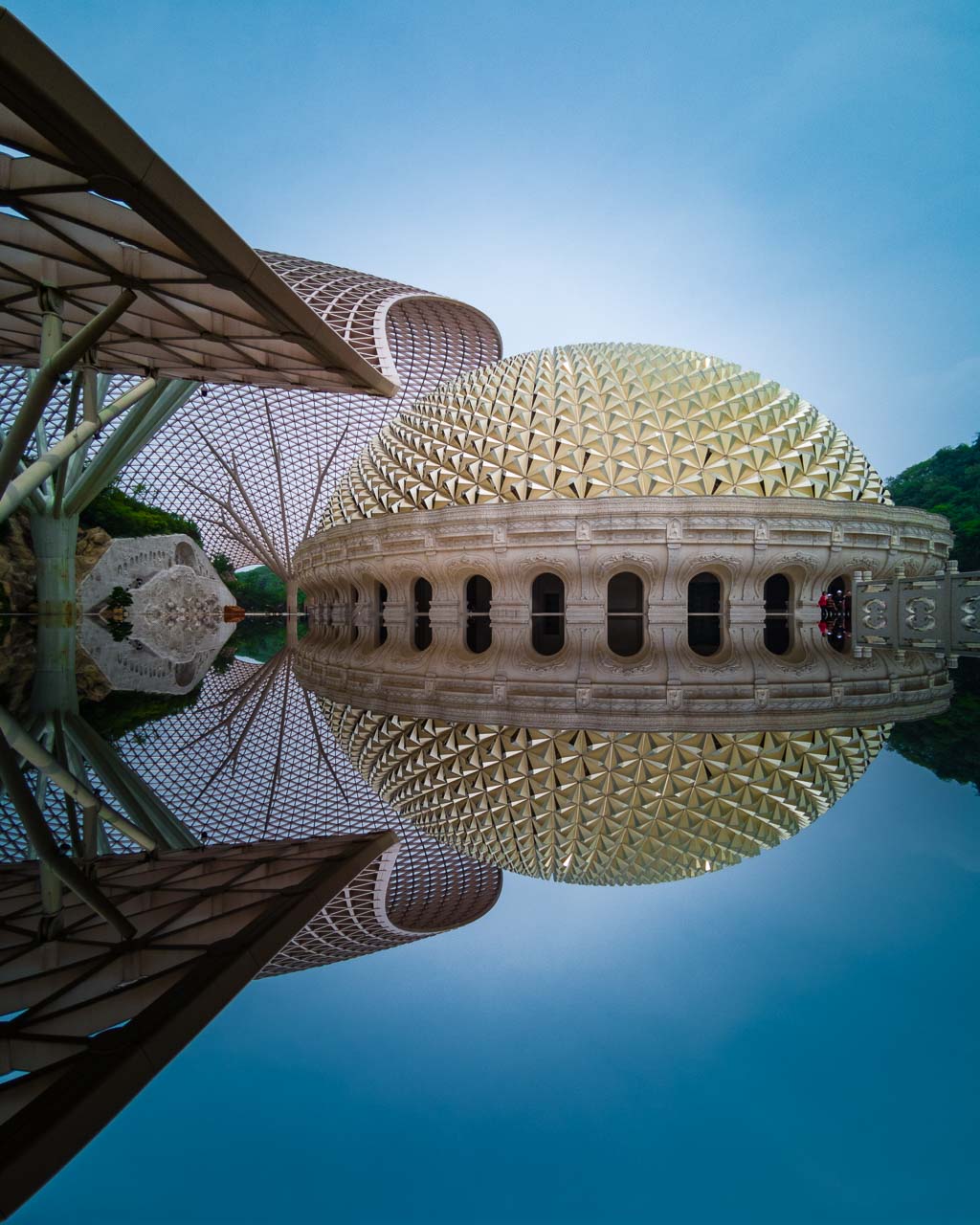
It may not be ancient, but Nuishoushan Cultural Centre is very impressive and one of our favorite places to visit in Nanjing.
A trolley takes you to the top of the mountain where you can view the immaculate Buddhist Palace that is built into the side of the mountain.
Opened in 2015 it is a complex that proves new and modern can be spectacular.
Take some time to explore the grounds to see the Usnisa Pagoda and Temple.
And visit the Usnisa Palace is a must.
The futuristic design is a stark contrast to the traditional pagodas, but it works.
The golden dome glistens in the reflection pool and upon entrance, you are treated in a serene reclining Buddha.
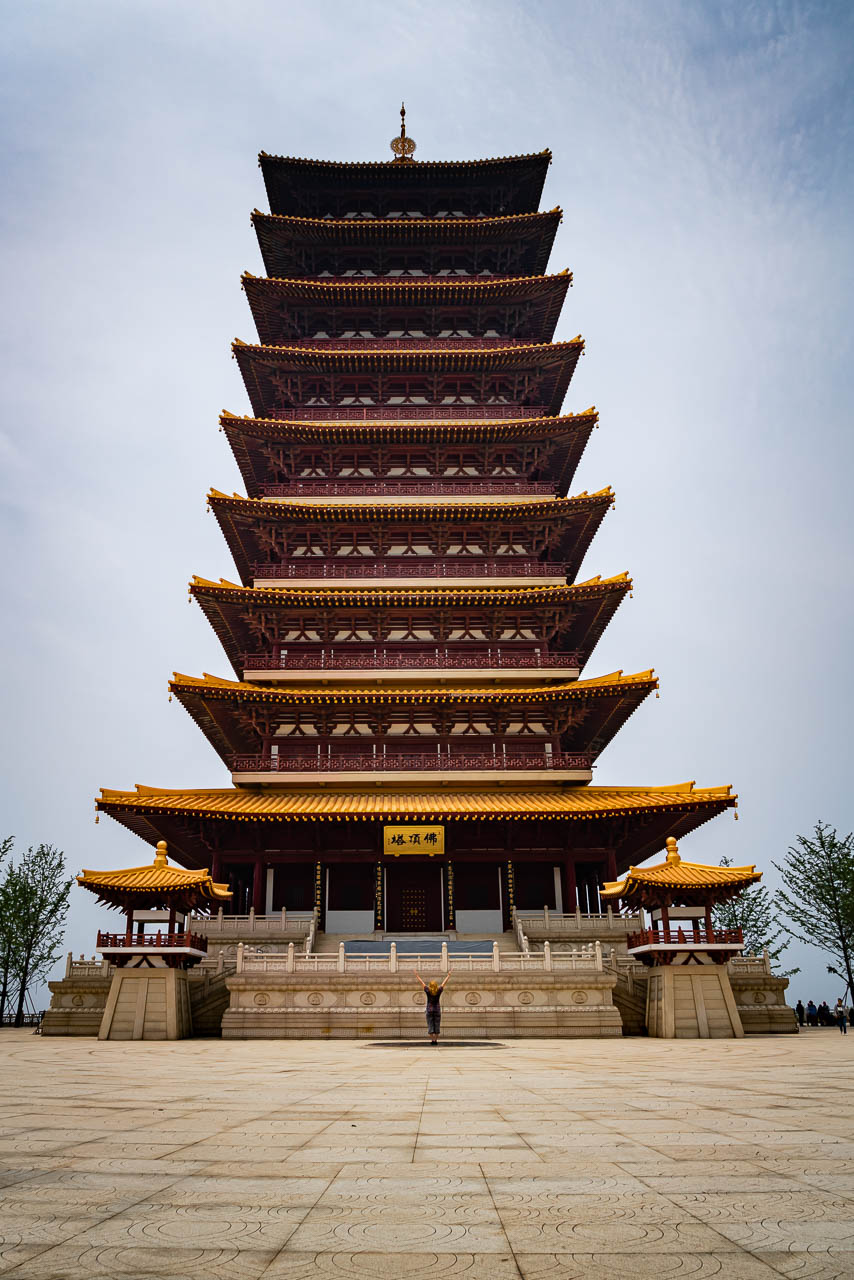
We thought that was all there was to see and were impressed enough with the setting and views.
But soon we realized that the true treat was inside the palace when we took the escalator 6 stories underground to see the Thousand Buddhas Hall.
With a height of 28 meters, the golden hall is truly impressive.
The Great Stupa of Usnisa is definitely the star attraction sitting in the middle of the dome surrounded by 5 golden Buddhas.
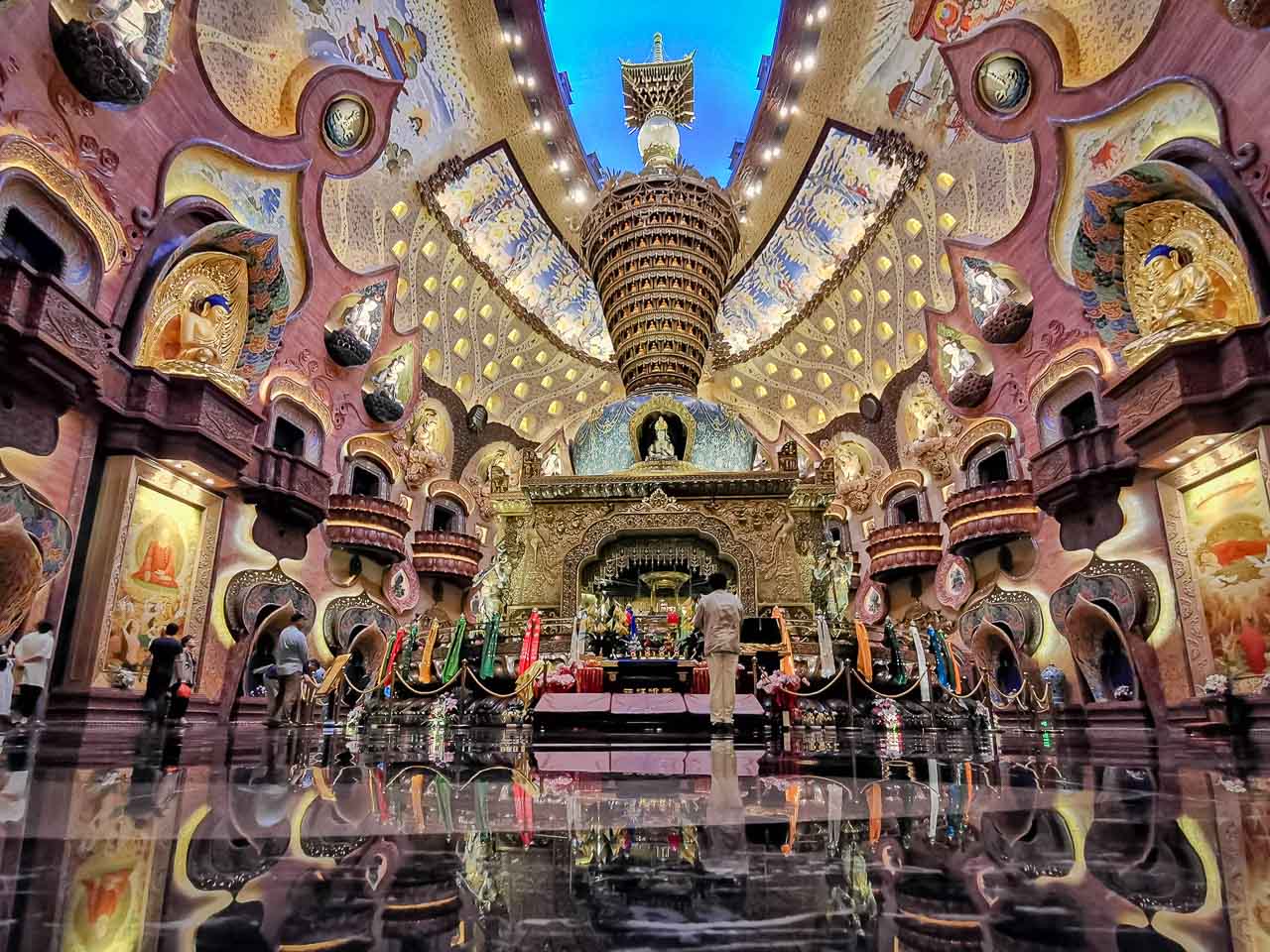
There is an excellent vegetarian restaurant on site and we highly recommend taking a full day to explore the Nuishoushan Cultural Centre to explore all the sites on the mountains.
There is a bamboo forest somewhere on the mountain but didn’t manage to find it save for a small view by the washrooms half way up. If you do, let us know!
Location: Jiangning District Hours
Hours: April—November (8:30AM-4:30PM) December—March (9:00AM-4:30PM)
Admission: 98 CNY (US $14.50)
Website: Niushoushan.net
2. Confucious Temple
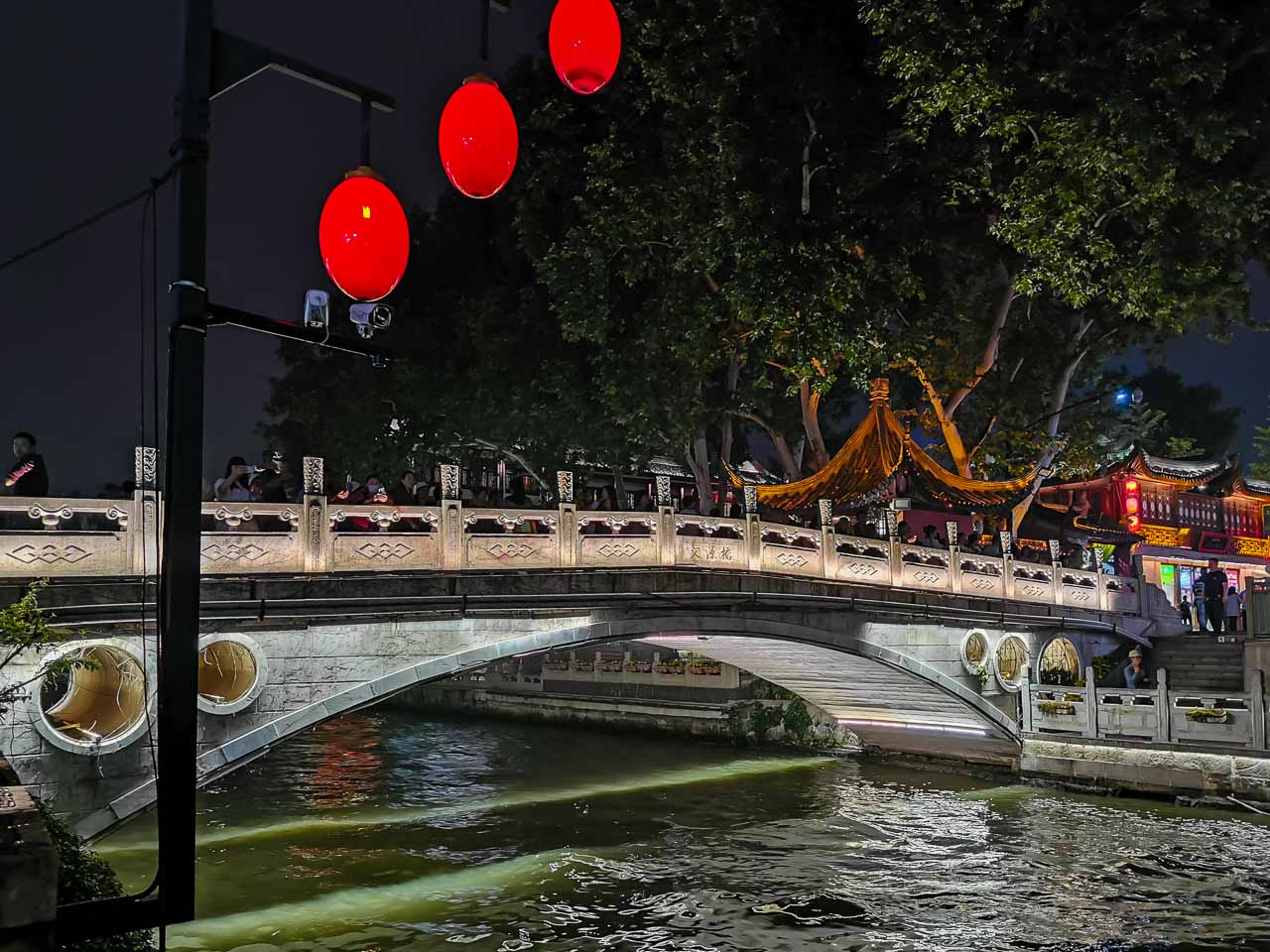
We visited Confucious Temple at night and it is beautiful. China at night is extraordinary and transforms into a showcase of lights and beauty.
The Confucious Temple is located on the Qinhuai River and is surrounded by a pedestrian area filled with temples, gardens, shops, and restaurants.
Dating back to 1034 during the Song Dynasty, the temple was reconstructed in 1984.
The most popular attraction in the area is a boat cruise along the Qinhuai River to take in the views.
At night every temple is lit up and performers act out moments from history.
It is very picturesque, but make sure your guide is on the boat with you to explain what is being said over the loudspeakers.
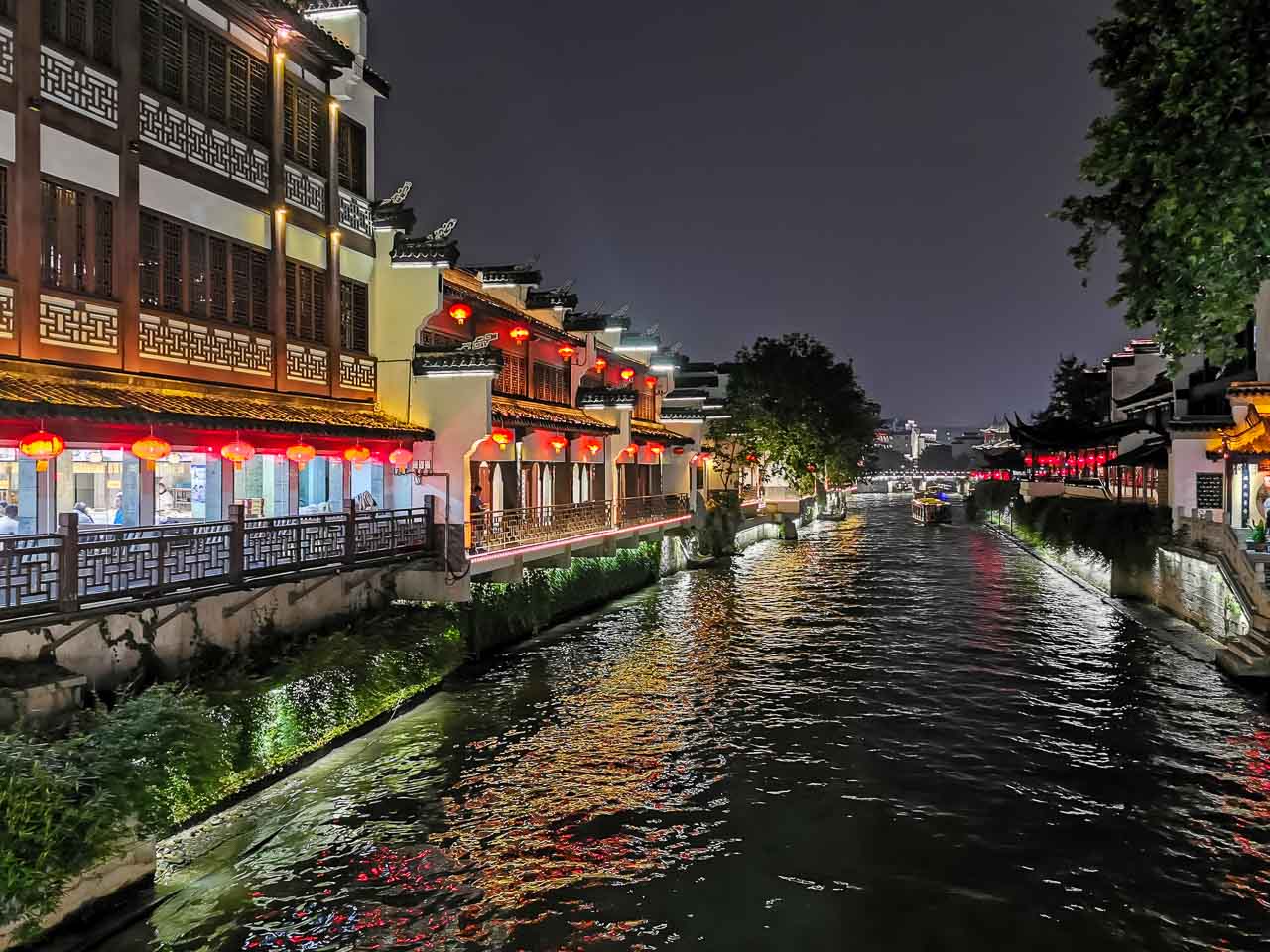
Location: Gongyuan Street
Hours:
- Dacheng Hall, 8AM–9:30PM daily;
- Imperial Examination Hall, 8:30AM–10PM daily
Admission: Confucius Temple grounds CNY 40 (US $6)
Cost of 50-minute Qinhuai River boat ride, CNY 60 (US $8.90) daytime / CNY 80 (US $12) evening
3. The Memorial Hall of the Victims in Nanjing Massacre by Japanese Invaders
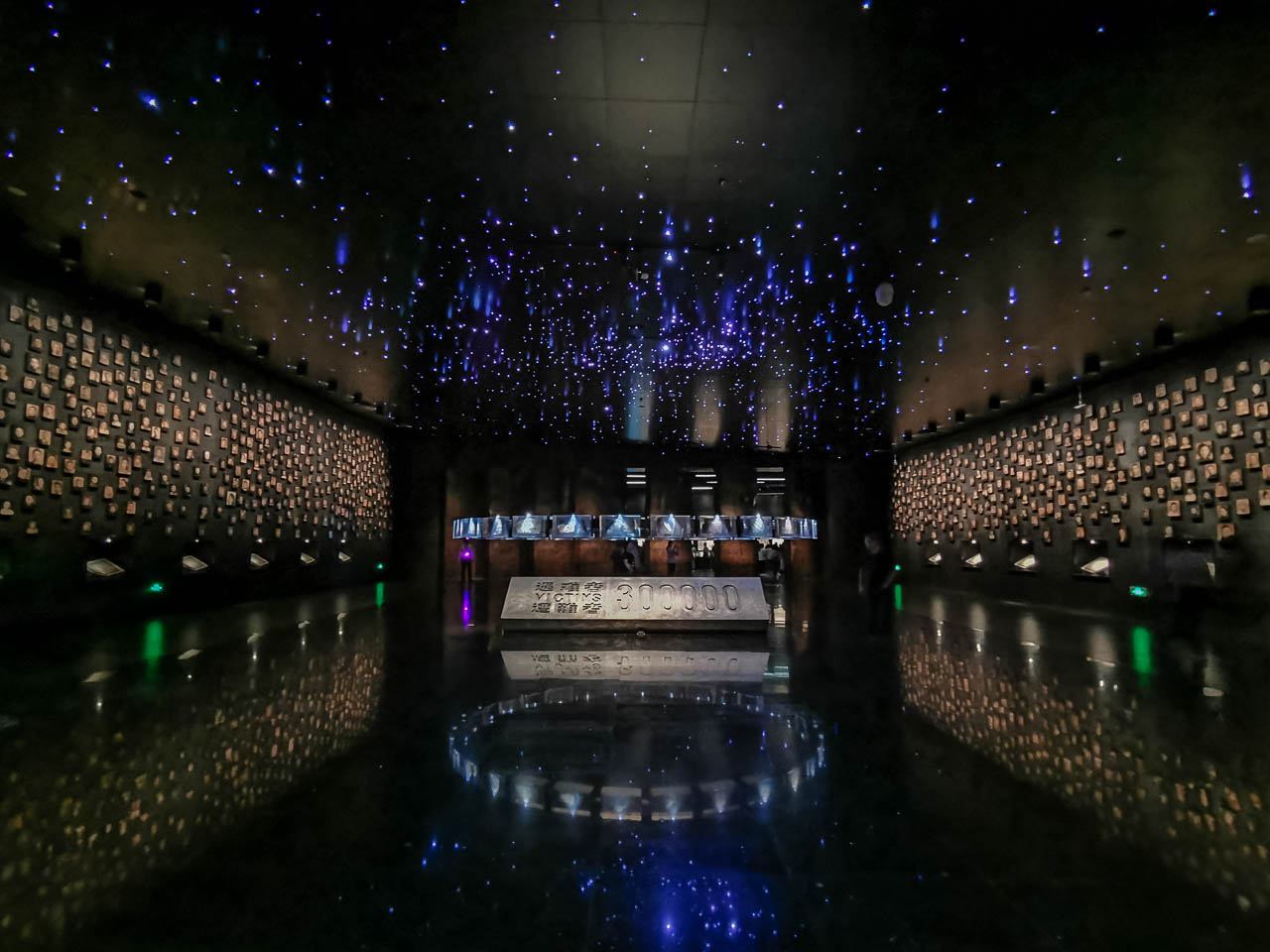
It is embarrassing to admit how little we know about Chinese history.
Before visiting Nanjing, I had no idea it was the former capital of China, and I had no idea that it suffered greatly during World War II.
But that is why we love to travel so much. It is the best education and helps one dig deeper into other cultures and history. It helps us all understand the world better.
The Memorial Hall of the Victims in Nanjing Massacre by Japanese Invaders is a stirring display of the massacre of 300,000 people by Japenese invaders.
Dave and I are not normally ones to visit museums, but this museum is a beautiful tribute to those who lost their lives during a 6-week occupation in 1937.

The interactive display takes you through several sections starting with the memorial hall showing the victims of the massacre.
As you walk through the display, first-hand accounts, relics, and scenes from the period are on display.
It takes you through history all the way up to the war crimes tribunal.
The solemn exhibit shows bones of people unearthed in excavations proving that the massacre took place.
There is also an extensive outdoor exhibit of sculptures and art.
Location: 418 Shuiximen Street, Jianye
Hours: 8:30 to 16:30 Tuesday to Sunday. (closed on Mondays)
Cost: The Nanjing Memorial Hall is free to visit.
Website: Nanjing 1937
4. Purple Mountain
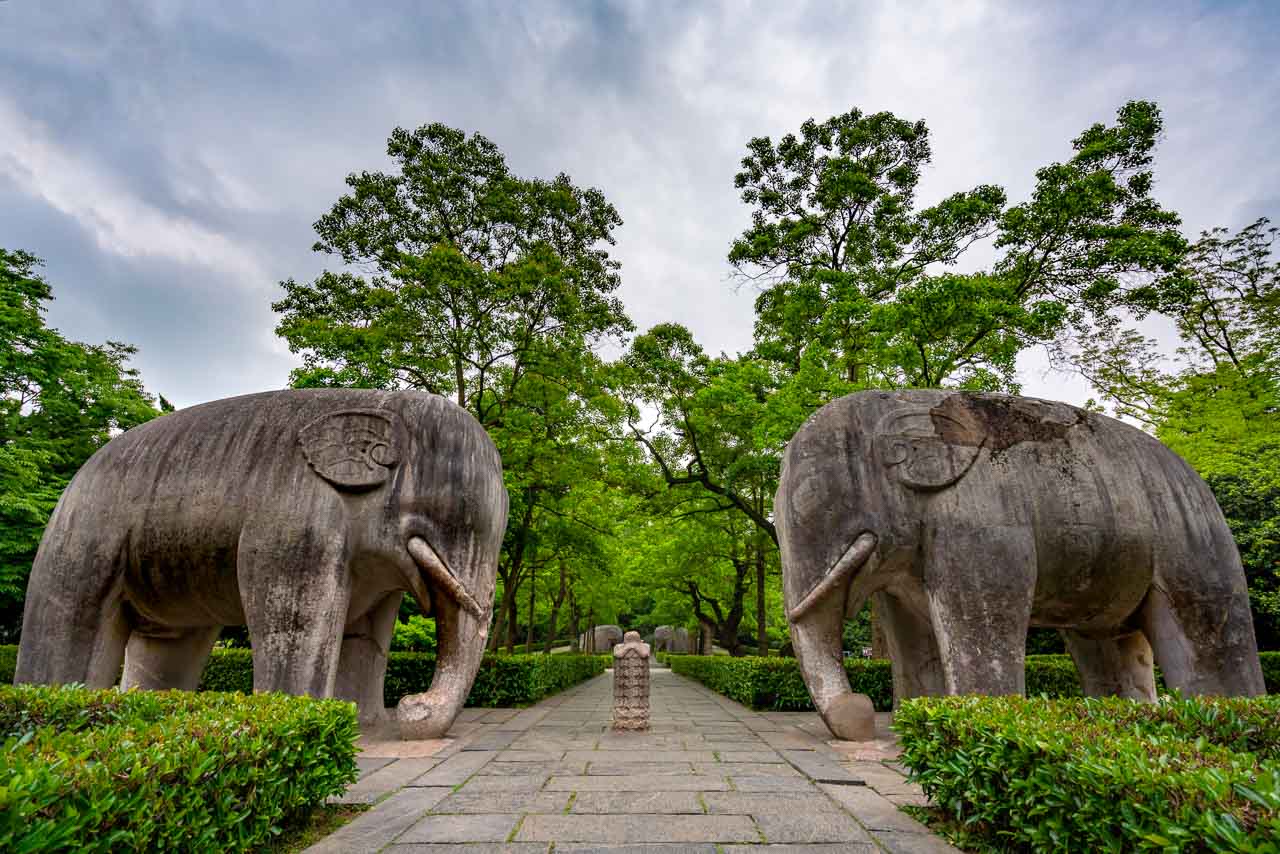
Considered one of the four famous mountains in Southern China, Purple Mountain is not to be missed!
And if the crowds of Chinese tourists are any measurement of how popular it is, I’d say they agree!
Covering a massive area of 31 square km (12 square miles) Purple Mountain requires a day to see.
There are two major attractions at Purple Mountain, and we suggest exploring one in the morning and the other in the afternoon.
Don’t worry, there are plenty of places to grab lunch at the mall in between the mausoleums including a very busy KFC.
5. Ming Xiaoling Mausoleum
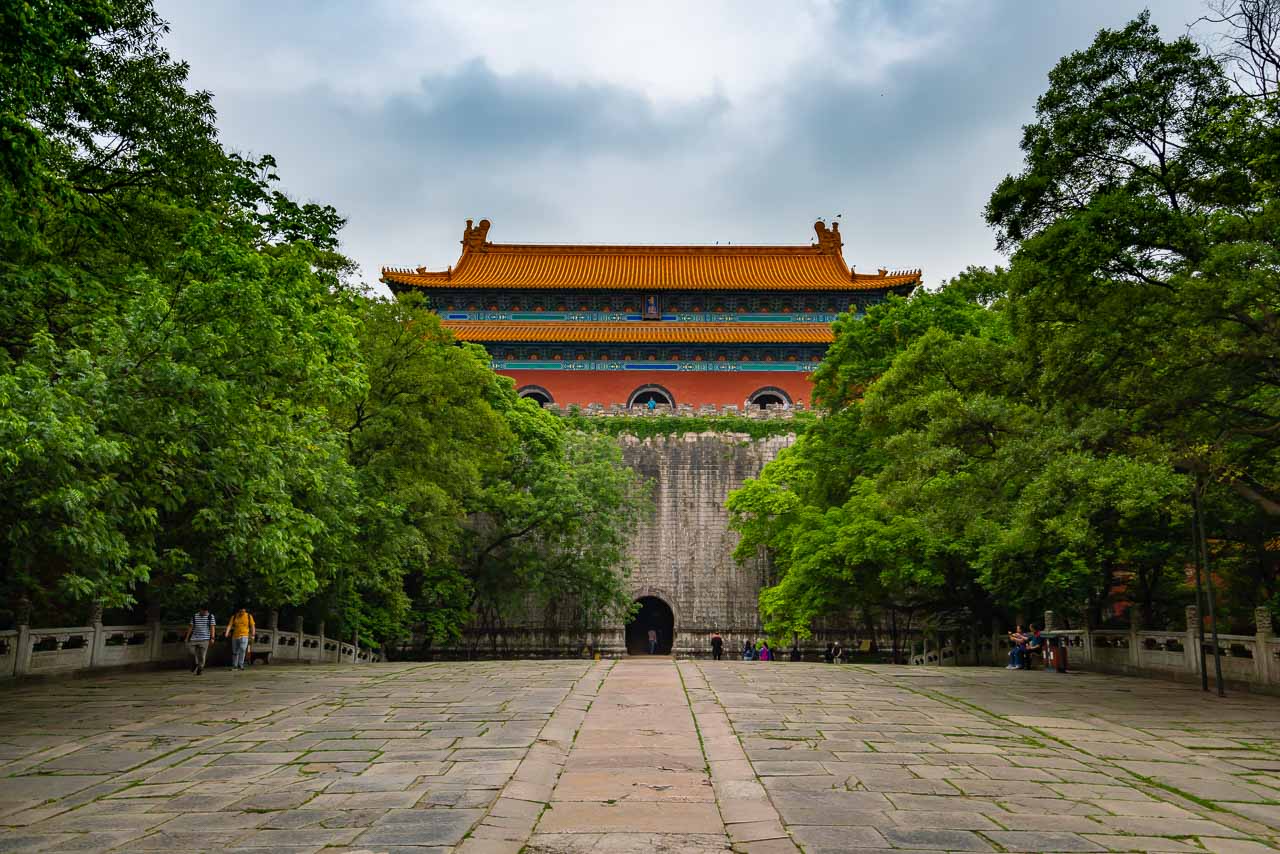
We started our morning at Purple Mountain exploring the Ming Xiaoling Mausoleum. It is one of the biggest imperial tombs in all of China.
Taking 50 years to complete, the Xiaoling Mausoleum dates back to 1381 and houses the remains of the Ming Dynasty’s founding emperor, Zhu Yuanzhang, and his wife Ma, Queen of Xiao Ci of the Ming Dynasty.
The mausoleum is impressive enough, but it is the walk within the grounds that had our attention.
The Sacred Way is a highlight dating back 600 years!
The UNESCO World Heritage Site is a walkway lined with large stone animal sculptures guarding the tombs.
There are 12 pairs of imposing creatures like elephants, lions, and camels standing proud along with four pairs of stone warriors guarding the tree-lined route to the emperors tomb.
With gardens, bridges, and ponds filled with water lilies, it is a peaceful place to spend a quiet morning contemplating the history that was lived within these grounds.
Location: Wengzhong Road, Xuanwu District
Hours: 6:30AM–5PM daily
Admission: CNY 70 (US $10.60)
6. Dr. Sun Yat-sen’s Mausoleum
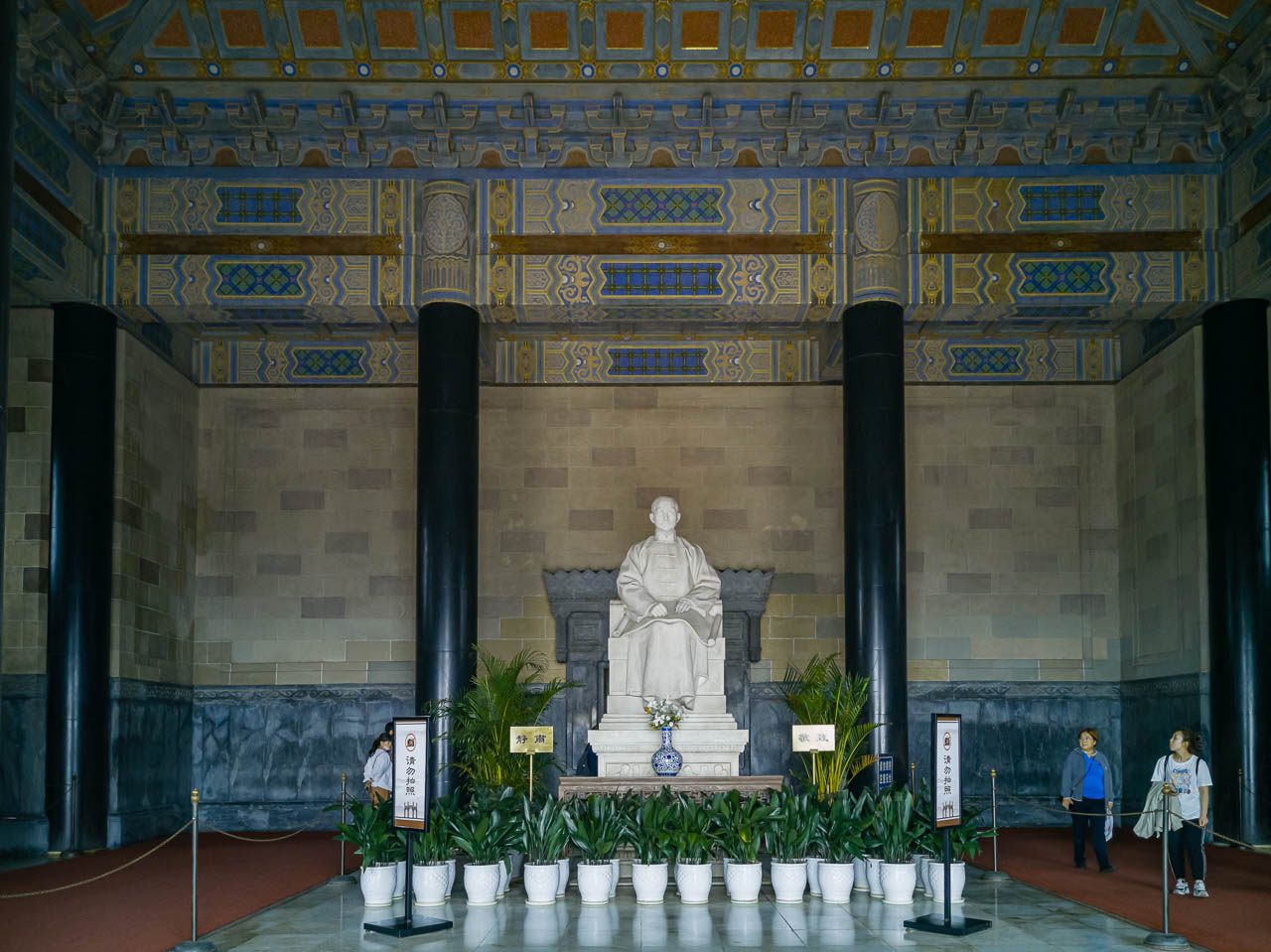
It was a very different experience when visiting Dr. Sun Yat-sen’s Mausoleum a short distance away.
The massive crowds formed on the stairs and we joined the throngs of people walking their way to the top to pay respects to the Father of the Republic of China.
Our guide told me that Dr. Sun Yat-sen can be compared to George Washington of the United States.
Even his monument reminded me of something I would see in Washington DC.
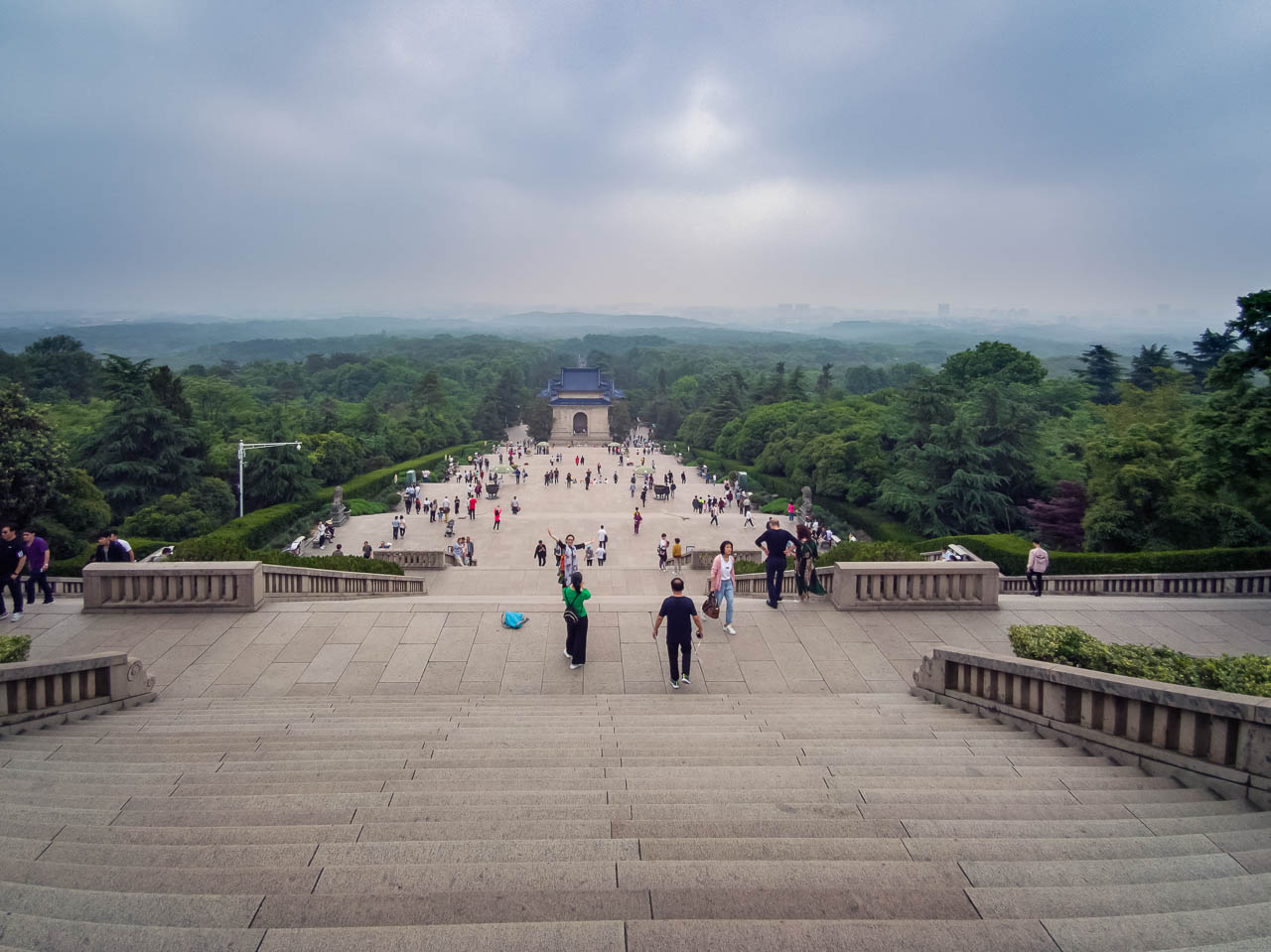
He was a very important person. It was in 1911 that he lead the way to bring down the corrupt rule of the Qing Dynasty that was in power for nearly 300 years.
He helped put an end to the monarchy system that had been ruling China for 2,000 years.
Location: Xuanwu
Hours: Tuesday – Sunday, 8:30AM–5PM. Closed Monday
Admission: Free
7. Nanjing City Wall
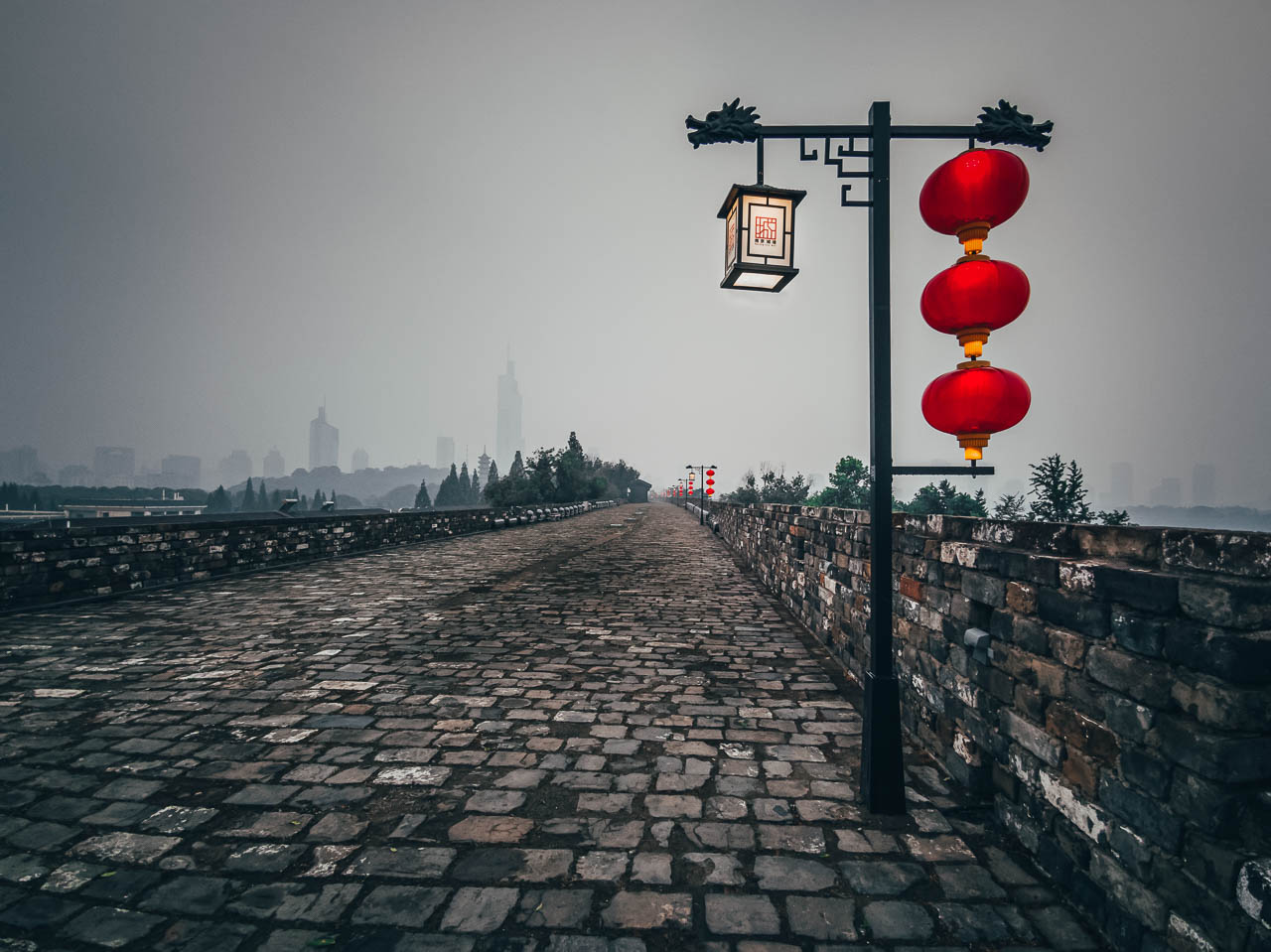
If you are a wall lover like us, a trip to the Nanjing City Wall is a must. It is the longest city wall in the world!
The original wall was nearly 22 miles long today 15.5 miles are still intact, and six sections are open to the public.
Having been to the Great Wall of China and to the Wall of Xi’an, this checked off a bucket list item to round out another important wall of China.
Founder of the Ming Dynasty, Emperor Zhu Yuanzhang, ordered the building of the wall to protect Nanjing from invaders.
The wall was made by the best brickmakers in the land and each brick has the inscription of origin bearing responsibility for the quality of bricks.
If they weren’t up to par, they most likely lost their lives.
How to Visit the Nanjing City Wall
Location: Lanqi Street,
Qinhuai Hours:
- Summer, 8AM – 6PM
- Spring, Autumn and Winter, 8:30AM-5PM
Admissions:
*Shence Gate to Taiping Gate, including the City Wall Museum, CNY 30 (US $4.50)
*Taiping Gate to Guanghua East Street, CNY 20 (US $3)
*East Water Pass to West Water Pass, including the barbican of Zhonghua Gate, CNY 50 (US $7.60)
*Qingliang Gate – Guofang Garden, Free
*Dinghuai Gate – Yijiang Gate, Free
*Zhongfu Road – Central Gate, Free
8. Calligraphy Class
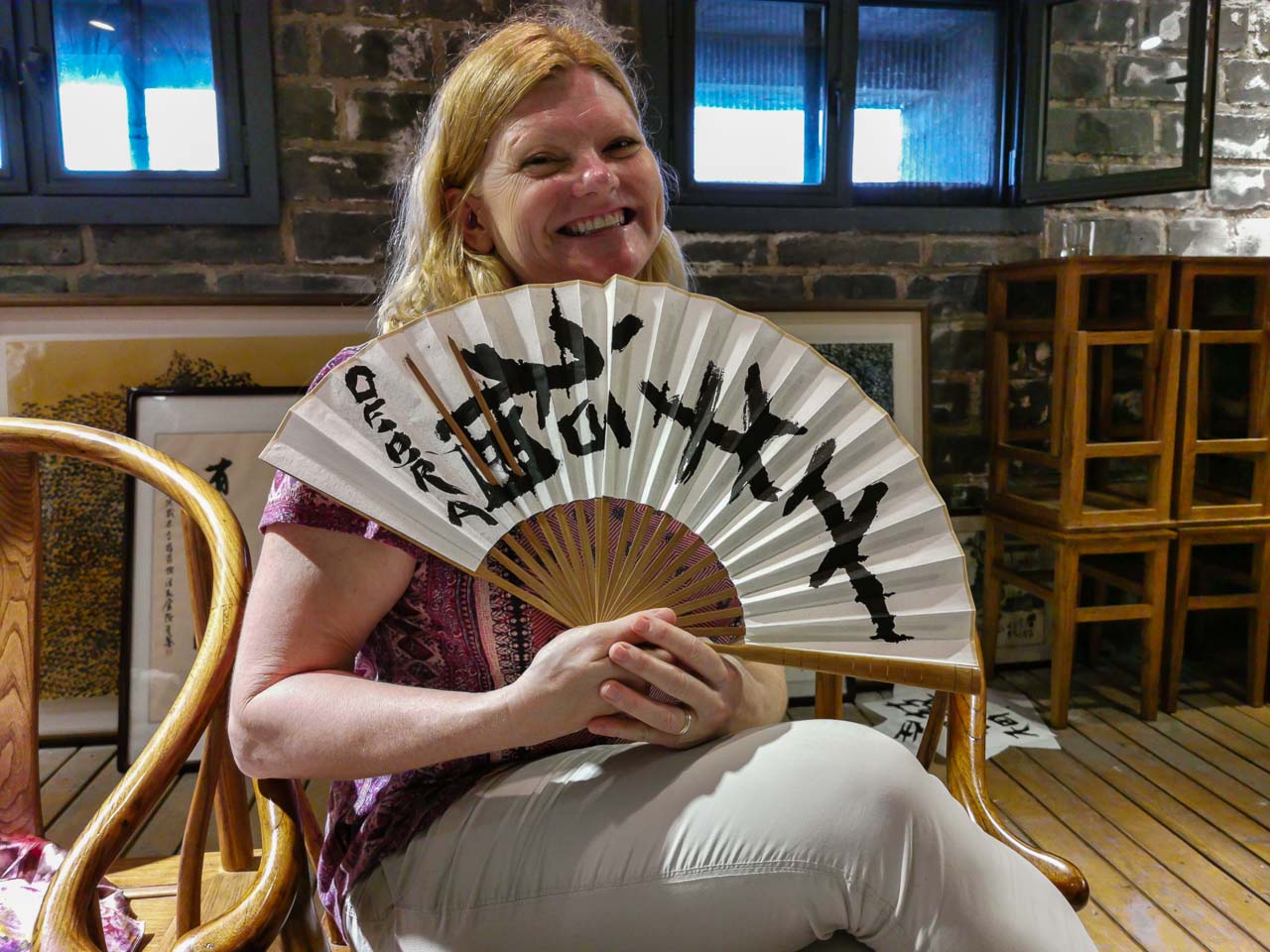
Calligraphy is a huge part of Chinese heritage and when in China, we highly recommend taking a calligraphy class. If we had a big enough place at home, I would gladly have an art studio in my place to practice.
Calligraphy is relaxing and I can see how it was used for meditation and contemplation.
It is much harder than it looks to master the Chinese characters and turn them into works of art.
Calligraphy is so popular in China, those great artists can sell their works for tens of thousands of dollars.
We took our class at a school on the Nanjing Wall, but there are many places to book a calligraphy class.
9. Porcelain Tower
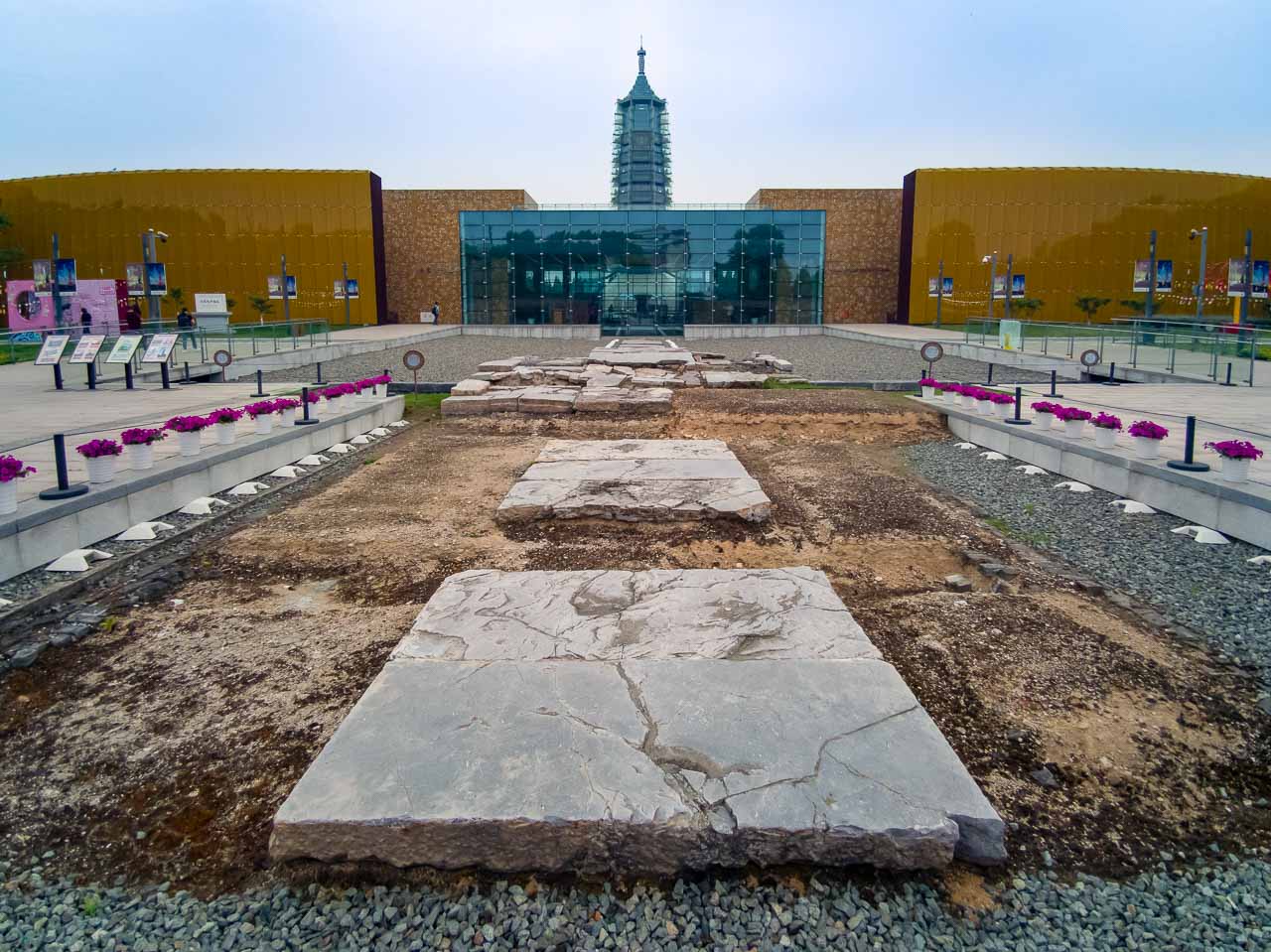
The Porcelain tower was considered one of the seven medieval wonders of the world, but like many historic buildings in Nanjing, it was destroyed.
In 2015 the new tower was rebuilt and today visitors can visit the museum and witness excavations that took place in 2008.
It is believed that the remains of Buddha were found on these grounds.
A visit to the top of the tower is a must for an overhead view of Nanjing. There is an elevator that will take you to the top.
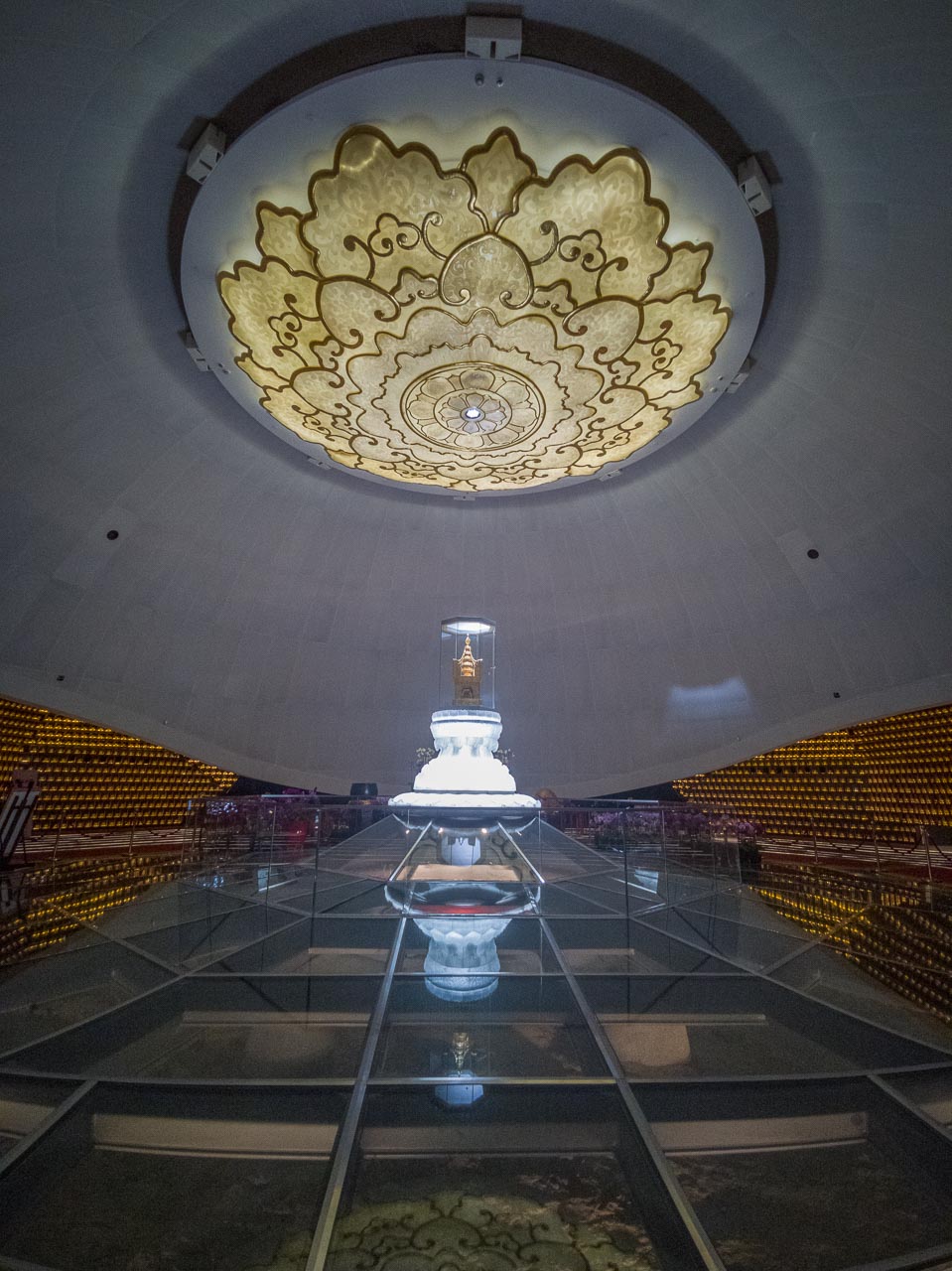
The tower sits upon an impressive room of glistening light bulbs representing the concept of Buddhism.
- Admission: 120CNY (USD $18)
- 9:00 AM- 5:00 PM
10. Nanjing Salted Duck
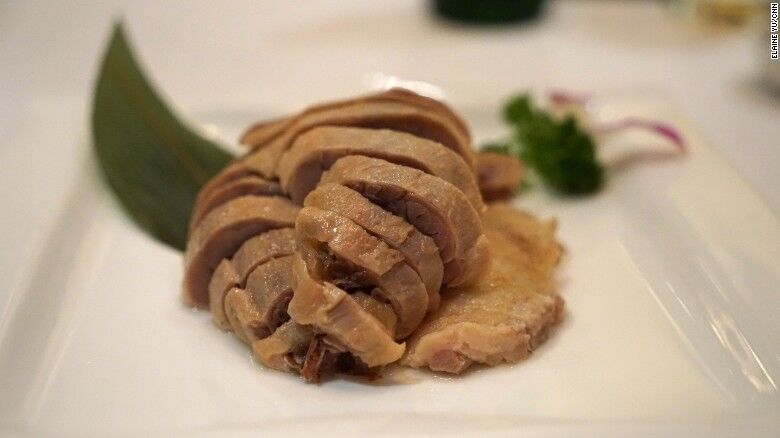
Everybody has heard of Peking Duck, but Nanjing Duck is actually more historic and truly authentic to Chinese history.
Nanjing was the former capital of China and it is famous for its boiled duck. When you visit Nanjing, it is as important and popular to try and Peking Duck in Beijing.
When people moved to Beijing, they brought the ducks of Nanjing with them to recreate their staple dish. But there wasn’t the room to roam freely like in Nanjing and the weather was much colder.
Ducks became fatter in Beijing and boiling them turned into a blubbery mess. It was by learning to fry the fat off the ducks of Beijing that Nanjing Duck was turned into the Peking Duck we all know today.
Nanjing has stuck to their original recipe and if you ask any local, they will insist that theirs is much better.
11. Traditional Incense Ceremony
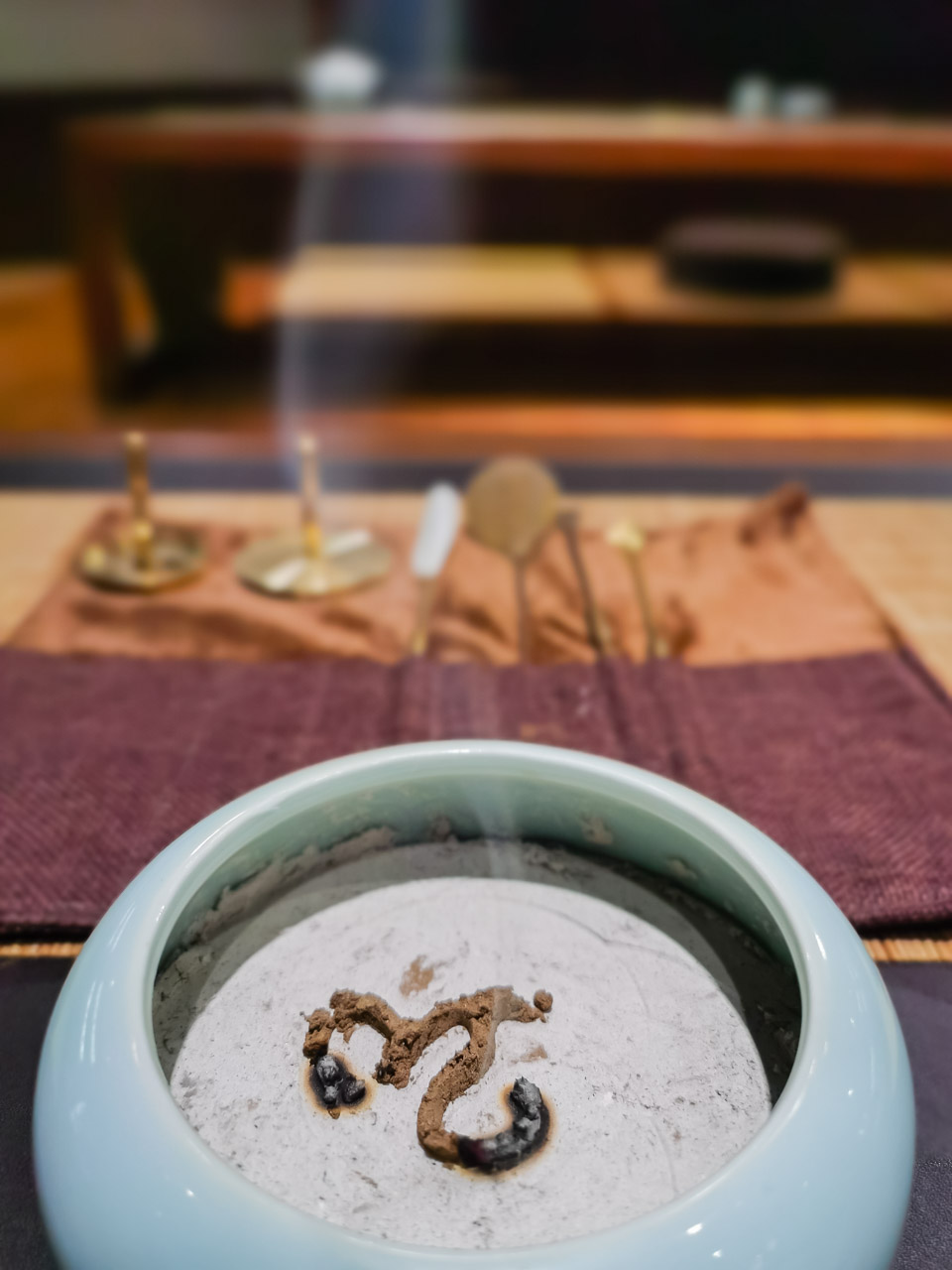
Incense plays a large roll in Chinese tradition and at the Porcelain Tower, we learned how to create an incense stencil to create an atmosphere of peace and relaxation.
Following our instructor, we meditated before learning to pour the powdered incense into a stencil creating the image of a lotus leaf.
There are many steps to take, and it is performed in a slow and deliberate motion to promote serenity.
After a few tries, we managed to produce a respectable reproduction and our masterpiece was finally lit giving us a proud sense of accomplishment.
Check out another Asian City guide at 7 Alternative things to do in Taipei
12. Tea Ceremony
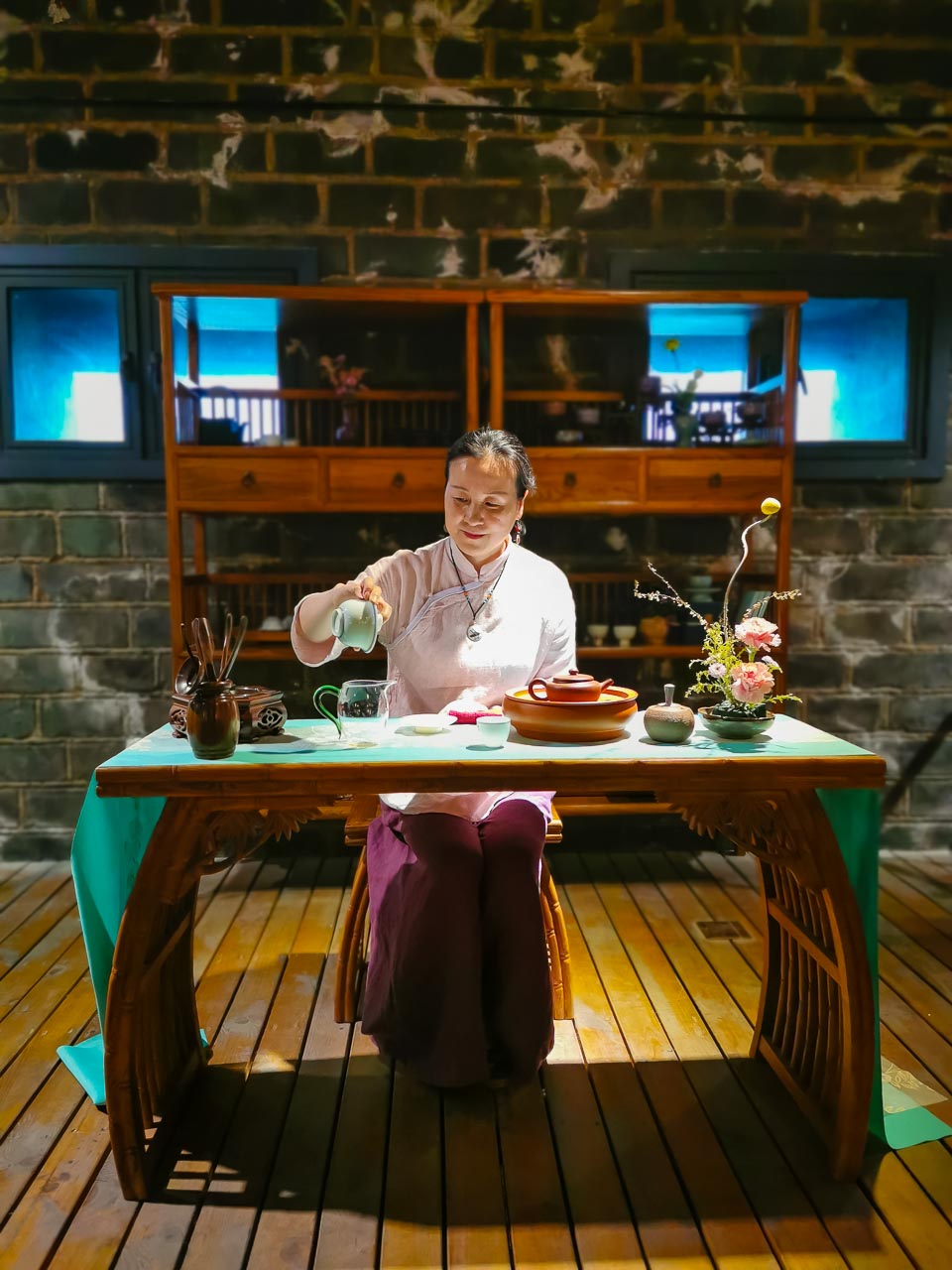
Each time we have gone to China, we have taken part in a tea ceremony. While in Nanjing, we had not one, but two tea ceremonies and we drank a lot of delicious tea.
After many trips tasting tea in China, we have come to the conclusion that tea tastes better here, not because it is fresh and grown here, it is because of the love and care that goes into serving it.
There are specific steps to be taken from heating the glass to pouring out excess water, warming the rim and finally letting the tea steep for the perfect amount of time.
The tea is poured into tiny cups and continuously refilled into you finally have to tell your server that you will float away if you have another brew.
If you really want to immerse in tradition, take part in a tea ceremony when visiting Nanjing.
13. Master Gao Pub
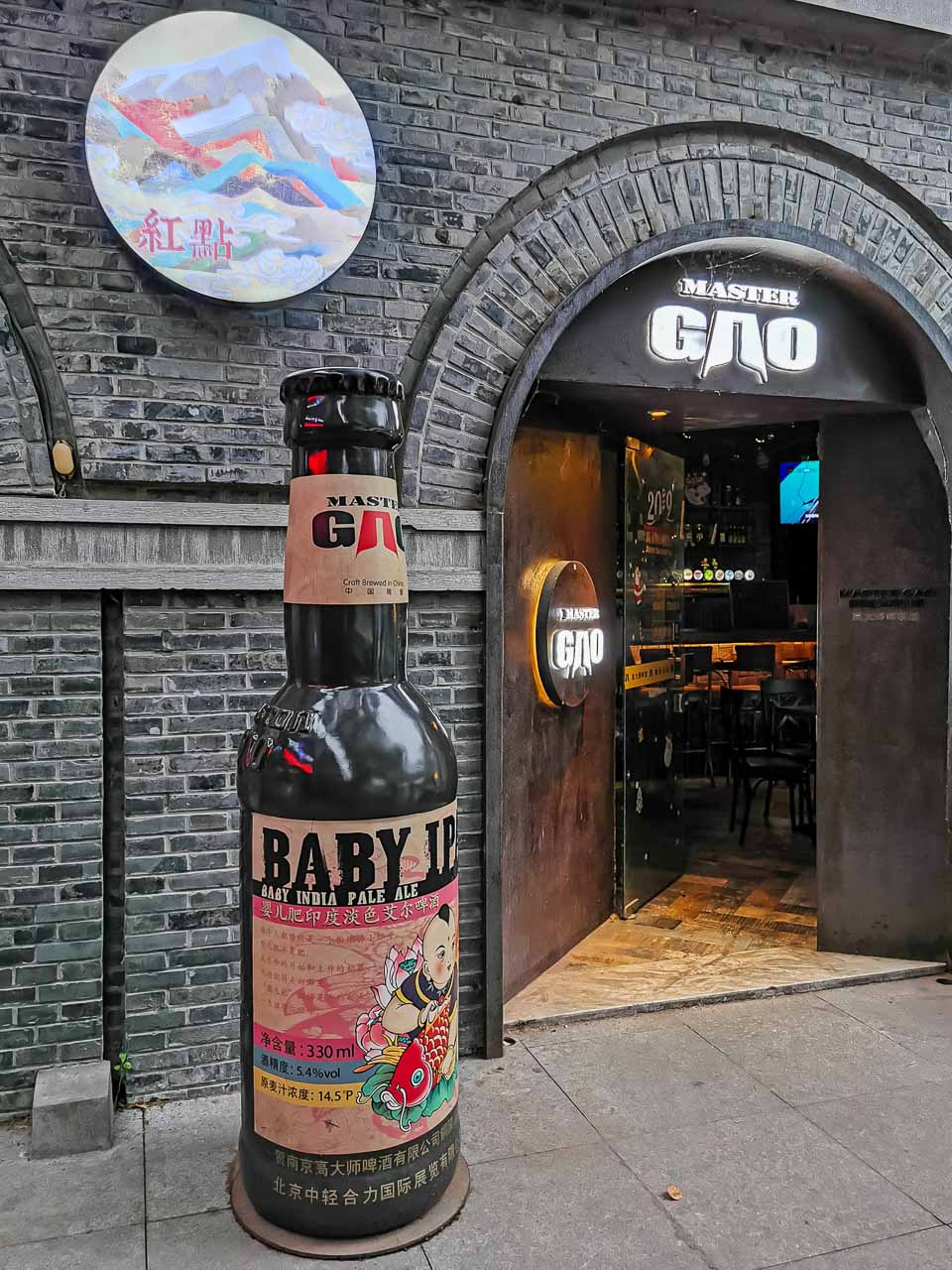
No trip to Nanjing would be complete without a visit to The father of China’s craft beer revolution, Master Gao.
Master Gao spent several years in the United States where he watched the craft beer industry grow in popularity.
When he returned to China in 2007, he opened his own craft brewery and has grown into the largest craft brewer in the country.
Did you know that China is the largest consumer of beer in the world? They may drink a lot of beer, but until recently, they have stuck with the traditional lighter brands like Tsingtao.
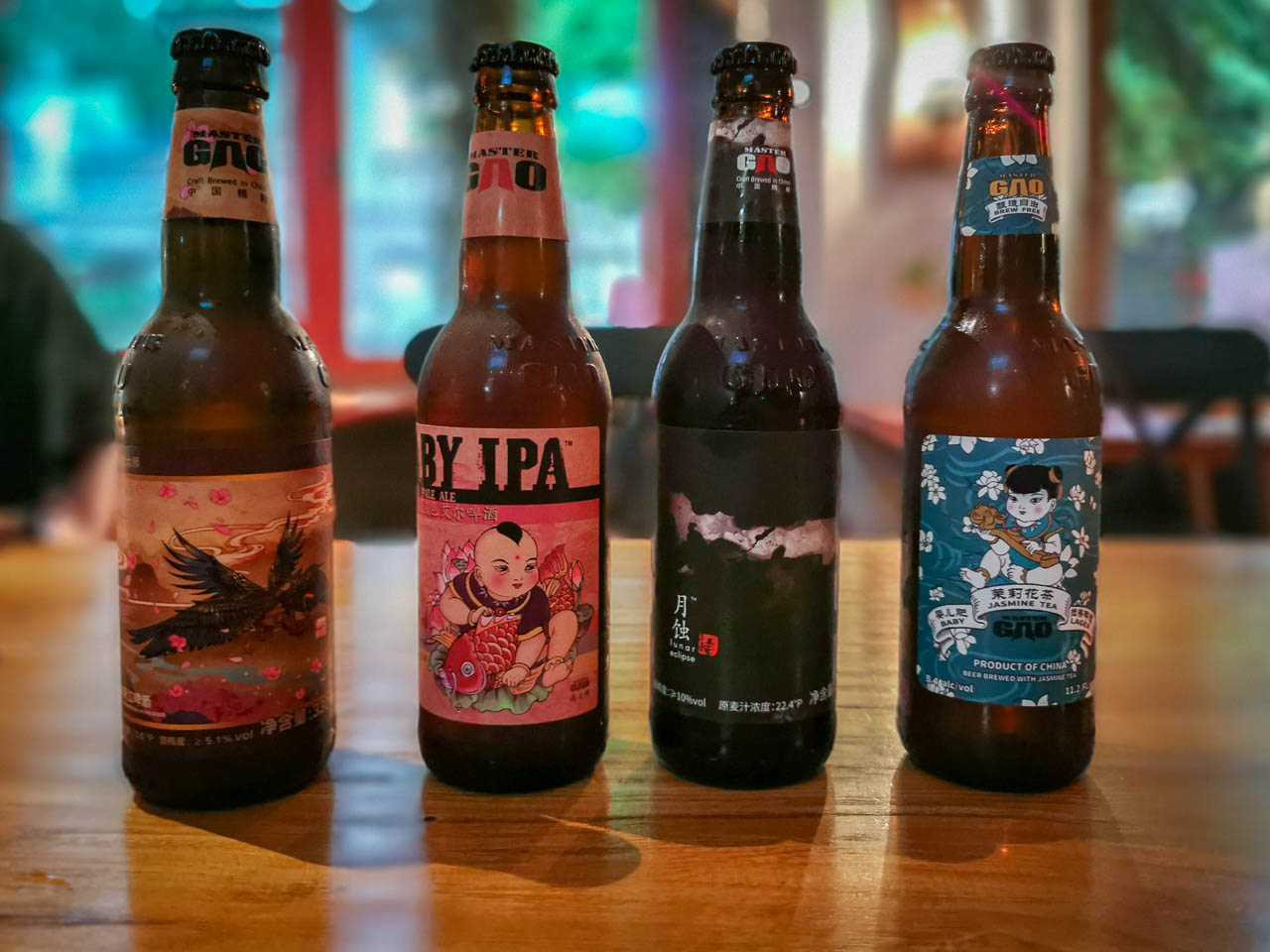
Master Gao has changed all that and now produces IPAs, Stouts and even brews like Jasmine Tea Lager.
He even invented the word for “Stout” in Chinese: shitao.
Master Gao will go down as a legend in China bringing microbrews to the nation. We tasted several of his mixes and can attest, they are fantastic!
- Location: Master Gao Craft Beer Pub at 52 Taiping North Road
This is a great area to spend the evening complete with eateries and pedestrian-only streets. There ‘s even a model train weaving its way through the crowds.
Recommended Nanjing Hotel
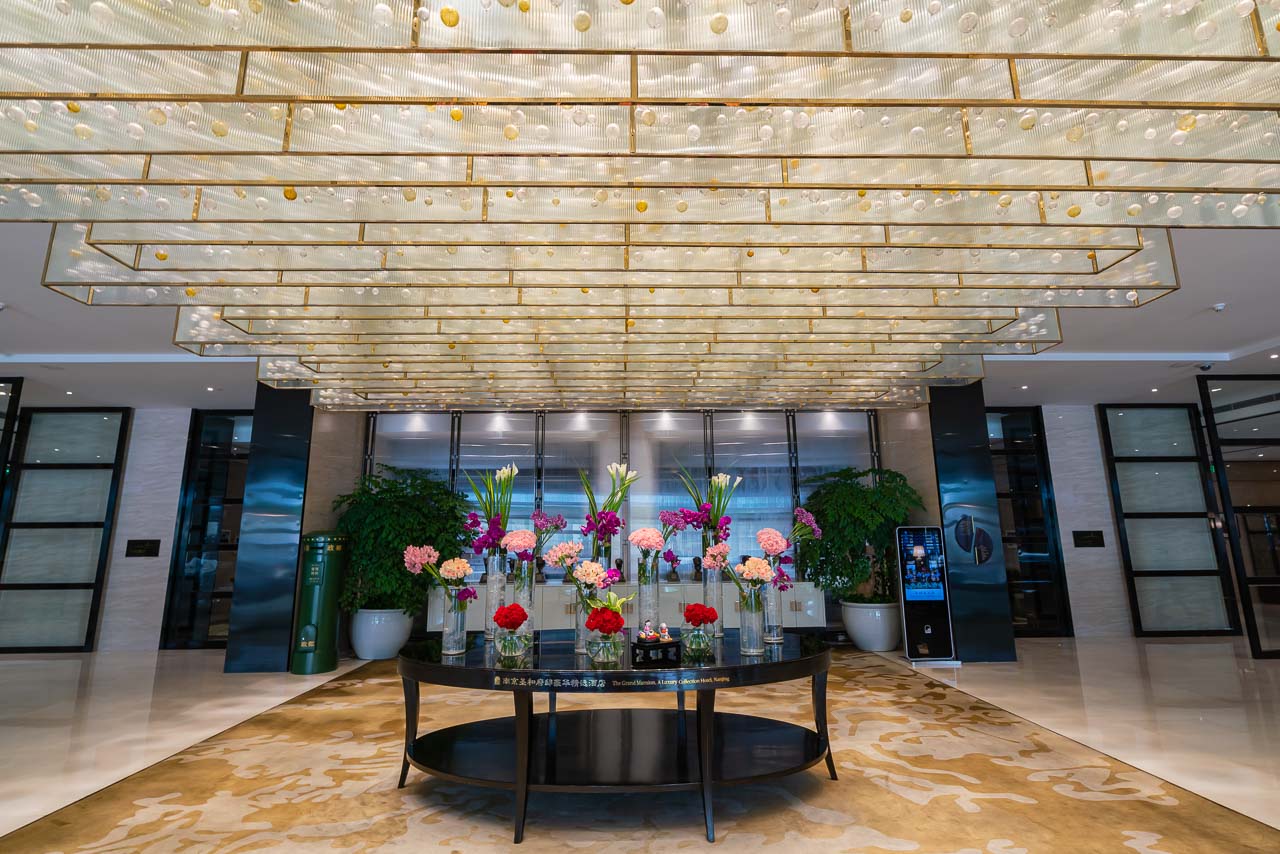
We stayed at the luxurious Grand Mansion Nanjing. Part of the Luxury Collection Hotels in China, this is an impressive place to stay.
I don’t think we have ever had such an eclectic and sprawling breakfast buffet in all our travels. There was something to please every palette from around the world.
There is an indoor swimming pool, spa, and gym complete with a boxing ring!
But the star attraction of the hotel is the The Traveler Library and Tea Lounge filled with traditional art, books, and cozy nooks to enjoy a nightcap or to quietly read your favourite novel.
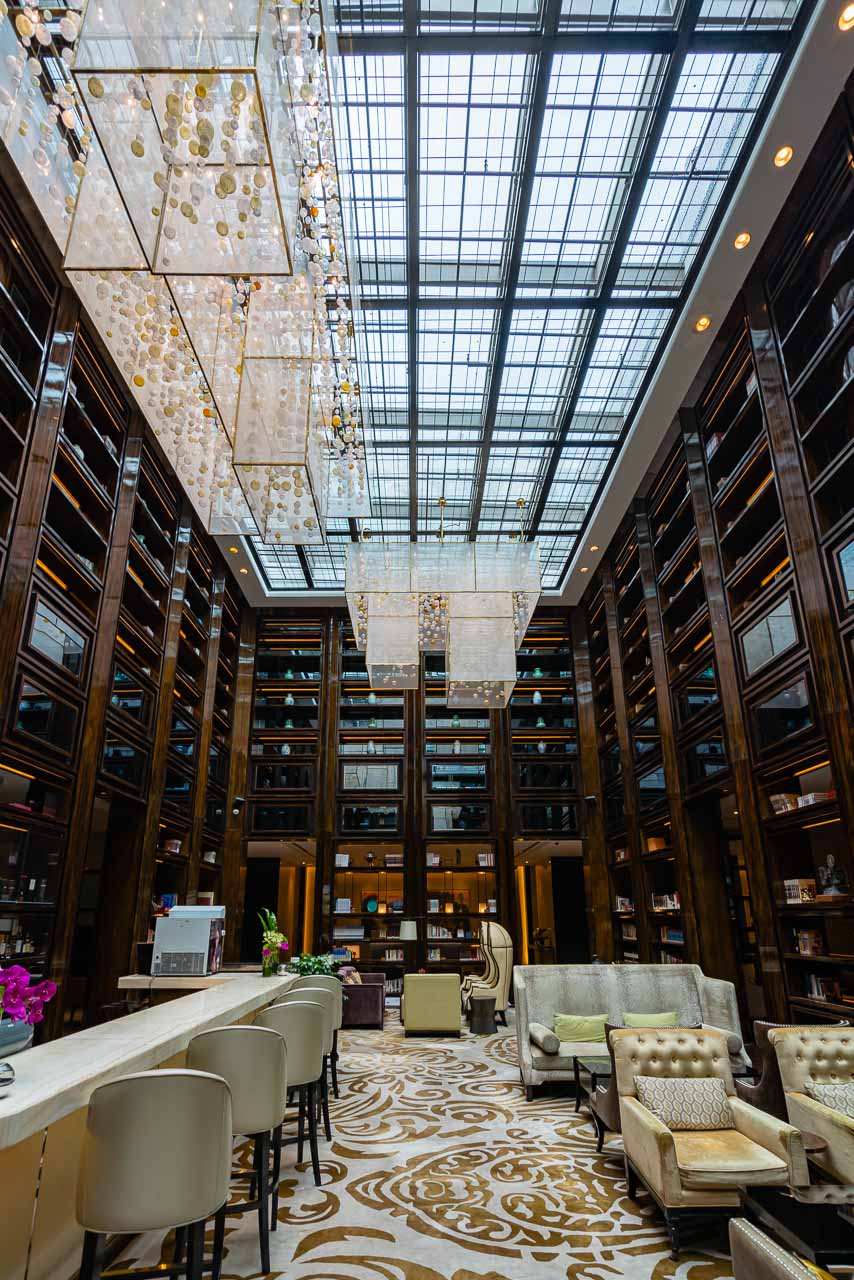
Check out reviews and rates on TripAdvisor
How to Get to Nanjing
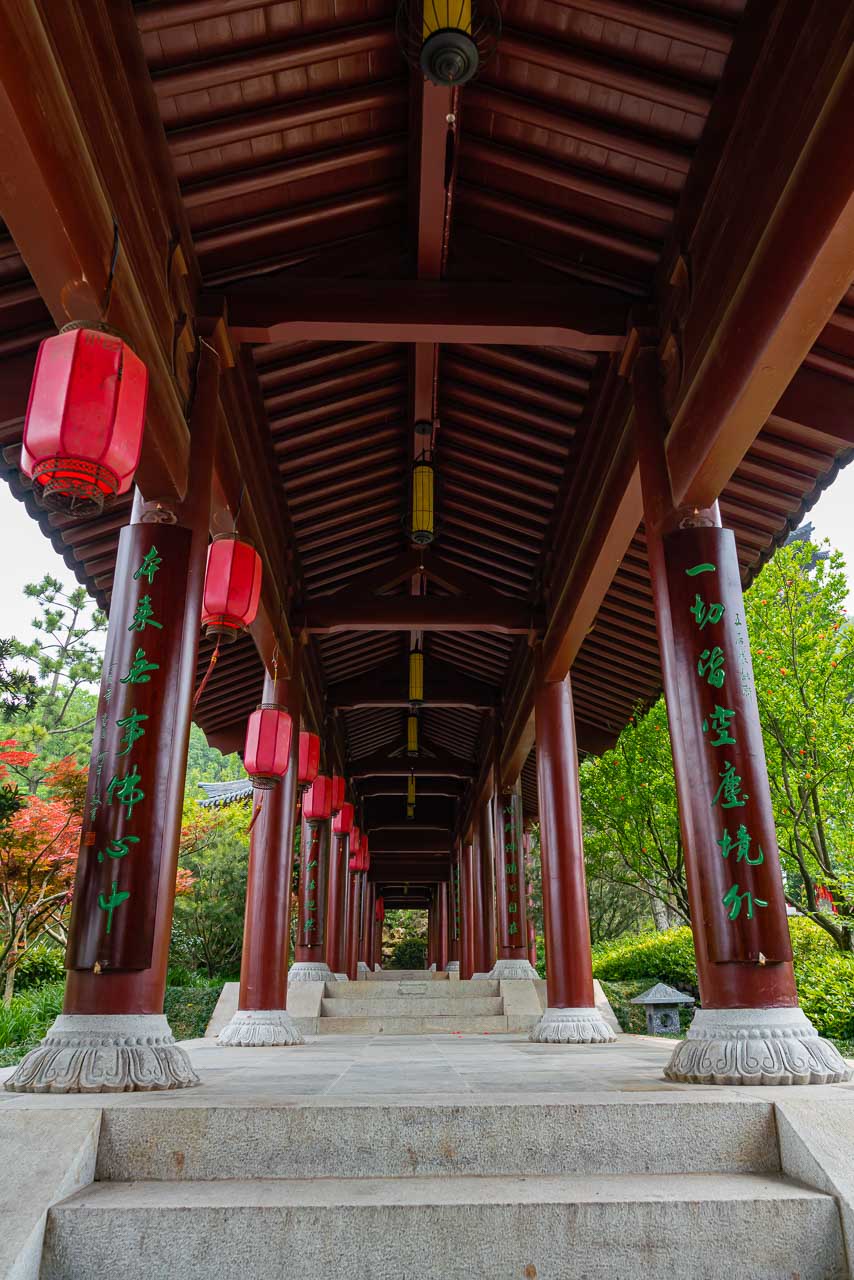
You can fly into Nanjing via Nanjing Lukou International Airport.
Located just 40 miles from the city center, it is easy to get a transfer.
We recommend Viator for a private car transfer. They wait up to two hours after your scheduled flight lands and they will l be holding a sign with your name on it making things easy and convenient.
There are three train stations in Nanjing. We arrived via Shanghai and it was fast, efficient and easy. The Nanjing Railway Station, Nanjing South Railway Station, and Nanjing West Railway Station connect to all of China’s major cities.
We took the bullet train from Shanghai and reached Nanjing in just 90 minutes. Beijing is just 3 1/2 hours from Nanjing via train.
China Eastern Airlines offers direct service from LAX, and a number of other airlines including United, Delta, and Qantas provide connecting service from other major airports.

Traveling within Nanjing: Two subway lines with clean, modern trains operate more than 50 stations throughout Nanjing, priced at less than US$1 per ride.
It is generally easy to find a taxi downtown, but make sure to take your hotel’s card to give to the driver as he most liely won’t speak English.
Unlike taxis in U.S. cities, drivers available for hire light their taxi lamps red, while green means the taxi is not available.
Internet Censorship and Cellular Data
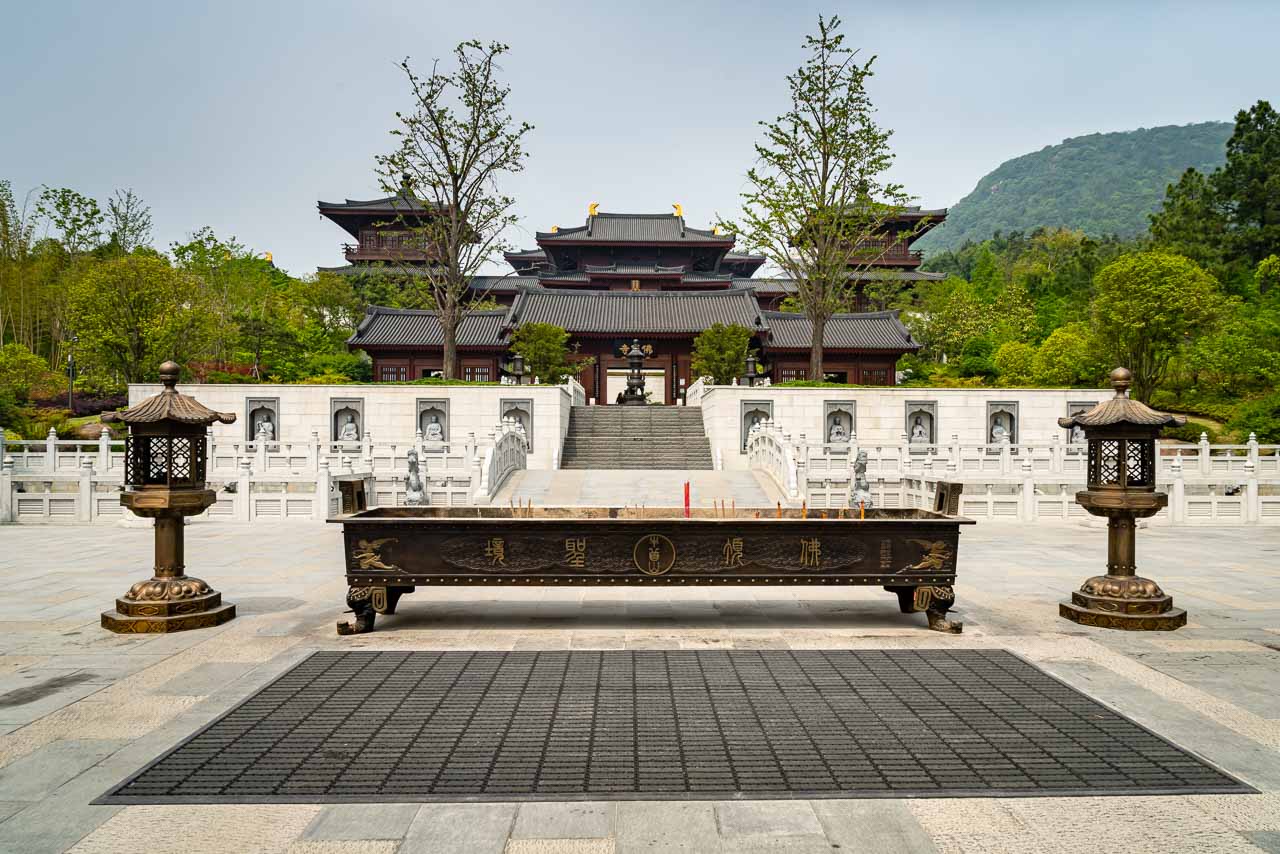
You cannot access Google or social channels like Facebook or Twitter. We used KnowRoaming SIM cards on our phones and it worked better than our VPN on our computer.
The KnowRoaming SIM is hosted outside the country giving you access to Gmail and all other social channels with ease. PlanetD readers receive 50% credit when ordering with promo Code DDSave50: Visit KnowRoaming for details.
International Data Packages are just $3.99 per day!
If you don’t use KnowRoaming, you must use a VPN to access Google, Gmail, and social media on your computer and cell phone. We found the VPNs much slower than KnowRoaming SIM Cards.
Read More:
Where to Go Off the Beaten Track in China

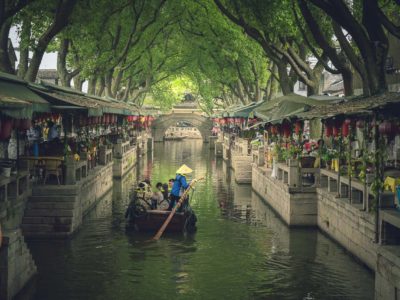
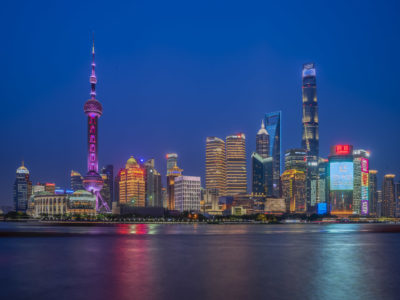
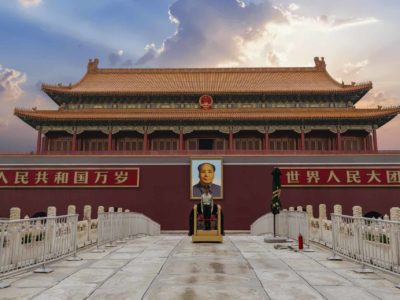
yes next we want to visit the china. Nanjing can be the my next place of international tour. Big question is i am pure vegetarian . It would be great if i will get some tips on vegetarian food.
I really love to visit China,there are lot of places there which are in my wish list.This article is really amazing you have well explained about the ancient capital Nanjing.Thanks for sharing useful information.
Nanjing is one of the most delightful destinations in China with its rich cultural heritage. In addition to historical sights, memorials, museums and cultural sights also attract thousands of visitors.
I didn’t know Nanjing was the former capital of China. Fascinating images. Such a beautiful place
How is the food in China?
Great article, worth to read it. Thanks for sharing to us
Only one word for this blog – Awesome.
I saw a documentary about Nanjing Massacre which was horrible
The information was very useful. Thank you for using beautiful images
Nanjing is the place I have never heard of but the Confucious temple looks interesting, so is the porcelane tower. I am a big fan of tea, so I imgine if I go to China I will spend a lot of time in the tea houses. Are there many in Nanjing?